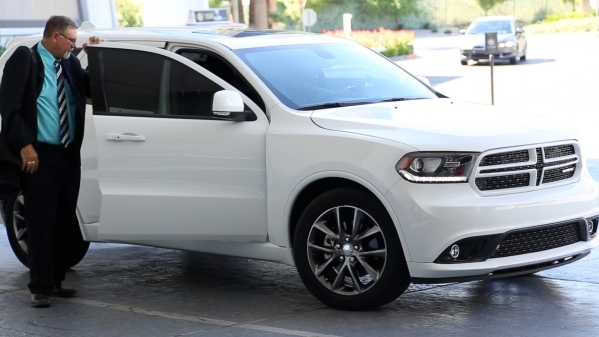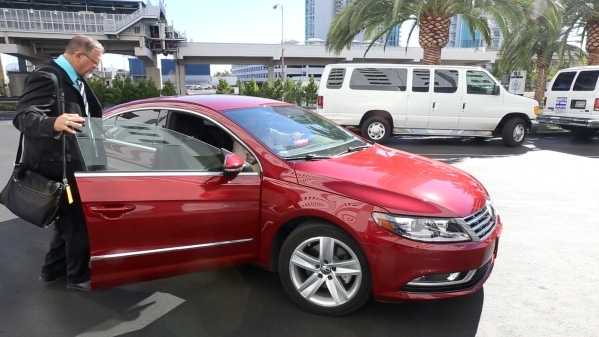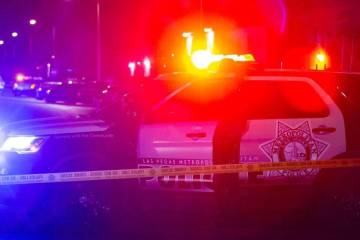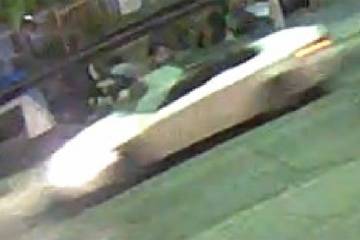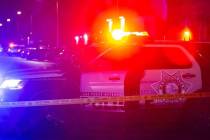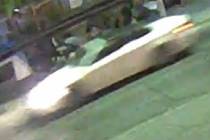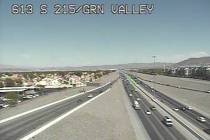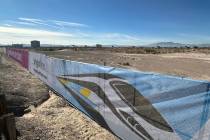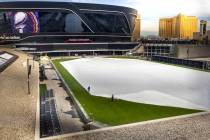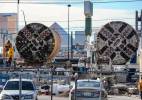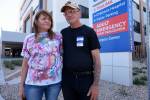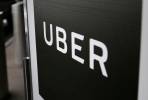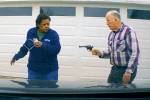There’s tips, fees and a near T-boning when comparing taxis vs. ride hailing — VIDEO
The last time this was tried, Uber went out of business.
At least, temporarily.
That won't be the case this time because Uber and its pink-mustachioed cousin, Lyft, are legal now, at least in the eyes of the state.
The plan was to do a side-by-side ride test comparing Uber, Lyft and taxi service with cost, timeliness and ride experience under scrutiny.
In November, just after Uber launched — illegally, as it turned out — the test was about half-completed when the company decided to discontinue operations after losing a court case.
Now that Uber and Lyft have been licensed by the Nevada Transportation Authority, thousands of drivers operate on Southern Nevada streets alongside some 3,000 cabs regulated by the Nevada Taxicab Authority.
The latest experiment played out on Oct. 14, a warm and sunny Wednesday, a day when the 30,000-delegate National Association of Convenience Stores was at the Las Vegas Convention Center and the 10,000-strong IMEX America was at the Sands Expo and Convention Center.
The plan was to ride six times, back and forth, between the SLS Las Vegas on Las Vegas Boulevard to the Clark County Government Center, once each direction with each mode.
Traveling in the late morning was part of the plan to avoid possible surge pricing by Uber and Lyft.
Google Maps has calculated the distance between the two points at 2.2 miles with the most direct route from SLS being north on Las Vegas Boulevard to Main Street, north on Main to Bonneville Avenue, west on Bonneville to Grand Central Parkway, then left into the Clark County parking lot. The shortest return route is 2.1 miles using Grand Central to Charleston Boulevard, east on Charleston to Main and then Main to Las Vegas Boulevard and the SLS. But that alternative is two-tenths of a mile longer, and one minute shorter than using Bonneville and Main going back.
Here are the key takeaways from the Uber-Lyft-Taxi faceoff:
— Of the three modes, Uber is the least expensive because it doesn't provide an opportunity to tip the driver — something that any courteous rider in a city dominated by the service industry should do. Uber also has a smaller "safety fee" than Lyft — $1 compared with $1.55. A cash tip could have been offered, but it isn't encouraged.
— The ride experience in Uber and Lyft vehicles is superior because most of the vehicles still have that new-car smell and are generally comfortable. Not enough leg room? No problem, just move the seat with the electronically controlled adjustments. The taxis ridden in this test had suspension issues common to vehicles with tens of thousands of miles on them. Every jolt in the road reverberated through the ride.
— The taxi drivers were more knowledgeable about the roads and how to get to their destinations. It's hard to believe that nearly every driver used had no idea where the front of the Clark County Government Center is.
— Every mode overpromised and underdelivered on pickup times. Lyft was the worst, taking nine minutes and 20 seconds longer to show up than their promised arrival times. Uber took seven minutes and 20 seconds more. A taxi arrived two minutes after promised on a call to 702-GET-TAXI, and a taxi line at the SLS was 10 minutes long during the test.
— Once you get the hang of using a smartphone application, it's pretty easy to use — nearly as easy as dialing the GET-TAXI phone number. But the GET-TAXI dispatch was clumsy, putting the caller on hold for more than three minutes.
— Uber will try to upsell to its UberXL service on its app, and if you're not careful, as occurred once in this test, you will get the more expensive XL service. (Uber X rates were used for rate comparison purposes.)
— Yes, there was some long-hauling. It was done by the Uber and Lyft drivers. In both cases, it occurred because the driver didn't know where he was going and had to be guided or he took an alternative route to save time, but not distance.
— None of the receipts from any of the modes showed the $3 fee to feed the state's highway fund and the UNLV Medical School.
All drivers wore their seat belts and drove safely at the posted speed limit. There were a couple of near-misses of accidents on an Uber ride that weren't the driver's fault.
The first ride, from SLS to the county, was with Lyft driver Sandro, who arranged the pickup on the east side of the SLS. The app reported a two-minute arrival estimate; he arrived eight minutes and 20 seconds later.
Because there is a median on Paradise Road, we were forced to head south on Paradise. Instead of making a U-turn, the driver took Paradise to Riviera Boulevard, then west to Las Vegas Boulevard. At Sahara Avenue, he went west to Interstate 15, getting off at Grand Central and that crazy Iron Horse Court loop.
Total distance: 4.1 miles and 14 minutes, costing $14.13, plus the $1.55 "trust and safety fee" and a $2 tip for a total of $17.68, billed directly to my credit card. (Yes, a $2 tip is cheap, but I'm a journalist on an expense account.)
The next ride was with Uber driver Osiri who drove the UberXL vehicle with the higher fees.
His estimated arrival was seven minutes from the hail, and he arrived in nine minutes. He called twice to verify location.
He drove closest to the shortest route — Grand Central to Charleston to Main — but also produced the biggest scare, nearly T-boning a sedan that U-turned in front of him. And, a couple of feet later, a long line of pedestrians was crossing against a traffic light at the Stratosphere. The driver just shook his head and muttered, "Vegas driving."
Total distance: 2.23 miles and 7½ minutes, costing $13.71, plus the $1 "safe rides fee," for a total $14.71, billed directly to my credit card. Had I used an Uber X car, it would have cost $9.78 based on its rates. My bad.
Back at the SLS, the cab line was about 10 people deep, and it took 10 minutes to get into a Checker cab.
Once on Paradise, the driver opted to take the U-turn to head toward the county building. He turned west on Charleston, then north on Grand Central, having to be guided to the front door of the building.
Total distance: Not listed on the receipt, but the time spent was 12 minutes. Based on cab rates of $3.50 for the drop and $2.76 a mile, a $2 tip and a $3 fee to pay by credit card, the bill came to $19.08.
Lyft provided the next ride from the county to SLS — and this one was the biggest adventure of the day. Cameron, an enthusiastic driver who just rented a new vehicle that day so that he wouldn't have to put mileage on his personal vehicle, mistrusted his Google Maps app. His four-minute pickup time turned out to be seven minutes, and when we left the county, we turned north on Grand Central and had to U-turn to get back on track. We almost turned onto the crazy Iron Horse loop but cut out of the left-turn lane after traffic passed us by.
Total distance: 3.8 miles and 18 minutes, costing $14.82, plus the $1.55 "trust and safety fee," and a $2 tip for a total of $18.37.
The last haul from the SLS to the county was with Uber driver Jeremiah. He opted to take I-15 to Grand Central, sitting through a long line of merging traffic from Sahara Avenue onto the freeway.
Total distance: 3 miles in 12 minutes, 49 seconds, costing $11.81, plus the $1 fee, for a total of $12.81.
Calling 702-GET-TAXI for the final ride was surprising from the perspective of waiting through 10 rings for the phone to be answered and then being put on hold. The conversation between the dispatcher and the driver came through on the phone with a seven-minute arrival promise that turned out to be nine minutes.
The Union cab ride cost $18.34 with the charge to use a credit card on the bill.
Last year, it was concluded that driving my own car was the best option available.
I will stick with that, comforted in knowing that those enamored with ride-hailing have new options they can use.
Contact reporter Richard N. Velotta at rvelotta@reviewjournal.com or 702-477-3893. Find @RickVelotta on Twitter.





